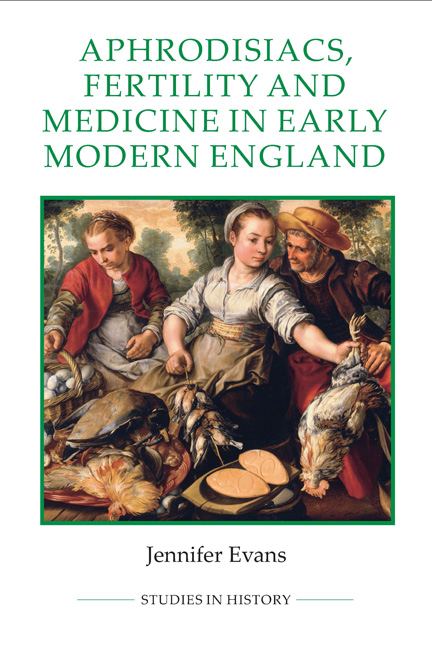Book contents
- Frontmatter
- Contents
- List of illustrations
- Acknowledgements
- Abbreviations
- Note on the text
- Glossary
- Introduction
- 1 Texts, readers and markets
- 2 The reproductive and the infertile body
- 3 Provoking lust and promoting conception
- 4 Enchanted privities and provokers of lust
- 5 Aphrodisiacs, miscarriage and menstruation
- Conclusion
- Bibliography
- Index
- Frontmatter
- Contents
- List of illustrations
- Acknowledgements
- Abbreviations
- Note on the text
- Glossary
- Introduction
- 1 Texts, readers and markets
- 2 The reproductive and the infertile body
- 3 Provoking lust and promoting conception
- 4 Enchanted privities and provokers of lust
- 5 Aphrodisiacs, miscarriage and menstruation
- Conclusion
- Bibliography
- Index
Summary
Early modern medical treatises paint a picture of many men and women struggling to conceive and give birth to live children. This was more than just a medical issue: reproductive failure undermined the happiness and stability of marriages, cast aspersions on a woman's character and hindered a man in fulfilling his patriarchal role. Childlessness was seen as a sign of God's displeasure and in some cases was interpreted as resulting from diabolical interference. It was greatly distressing and medical writers lamented the pain and desperation that these couples experienced. They noted that women in particular followed in the footsteps of the biblical Rachel who cried out ‘Give me Children or else I die’. Medical writers and practitioners attempted to ameliorate this condition by advocating a range of therapeutic strategies that would improve fertility. Fundamental to these treatments, based upon the conviction that sexual desire and pleasure were inextricably connected to generation, was the use of a diverse range of aphrodisiacs.
Ideas about aphrodisiacs were not static in this period. As anatomical discoveries changed the way in which the reproductive organs were understood certain aphrodisiacs were rejected as ineffective – both for stimulating lust and improving fertility. There were also shifts in the understanding of infertility. In particular there was a move across the period towards the use of gender/sex specific labels for infertility in women and in men.
- Type
- Chapter
- Information
- Aphrodisiacs, Fertility and Medicine in Early Modern England , pp. 191 - 196Publisher: Boydell & BrewerPrint publication year: 2014



